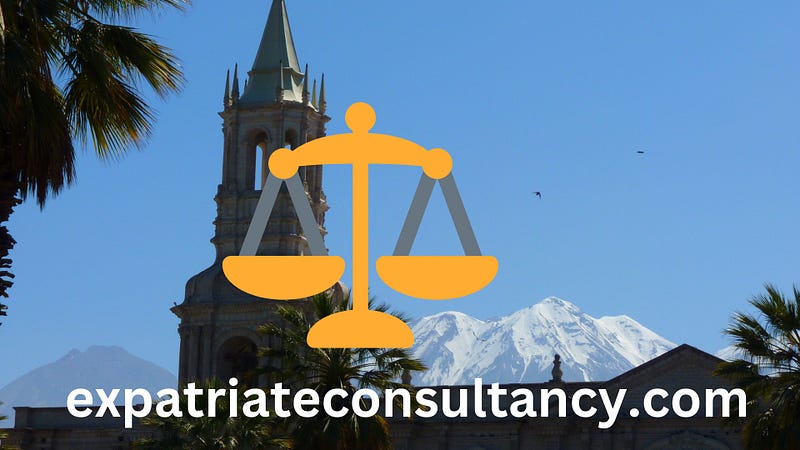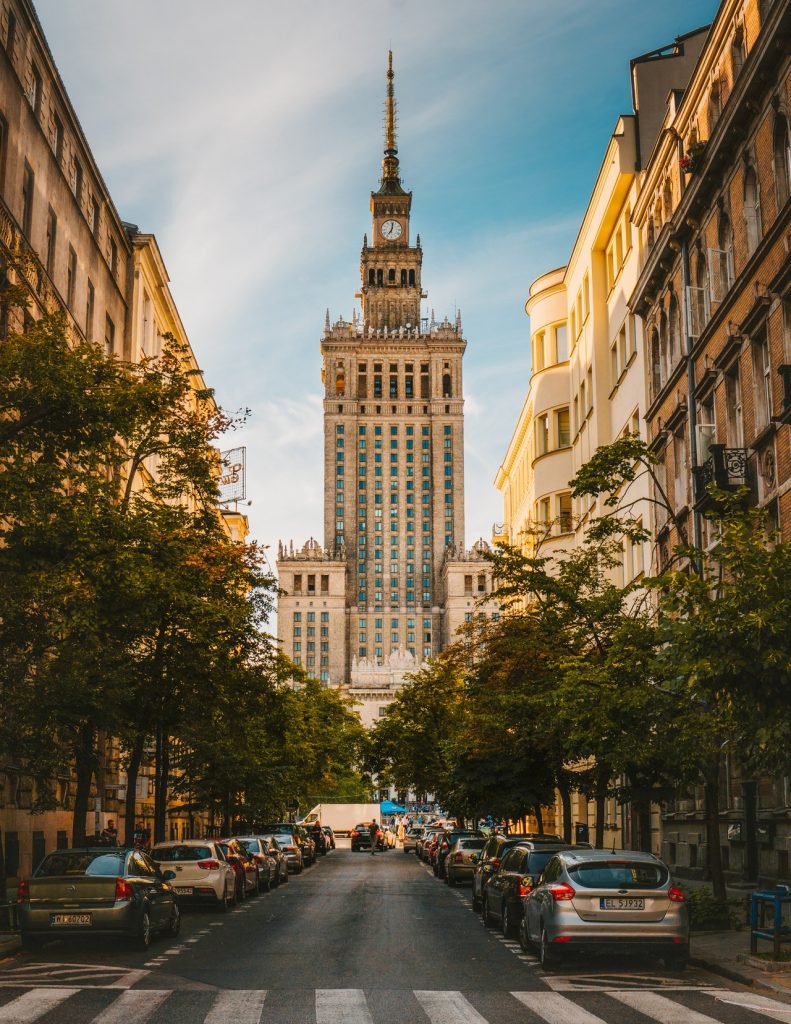Discover how the Rentista Visa is making feasible plans to retire in Peru and the downsides of this country.
If you have already read any of my other articles about retirement abroad, you can jump straight to the first subtitle (The Pros and Cons of Planning to Retire in Peru). If not, keep reading from the beginning to get some context.
My company helps expats. Many of these people know what they want and just need help. What about retiring in X? What’s your opinion? they ask me.
Often I don’t know what to say. I tell my team to research the destination and write a detailed report so I can give our customers the information they need.
Not surprisingly, most of the destinations are warm places with idyllic beaches. Below is the resumed version of some reports we did, available for free for you:
- Retire to Canada – Pros, Cons, and Costs
- Pros, Cons, and Costs to Retire in Bali (Indonesia)
- Pros, Cons, and Costs to Retire in The Dominican Republic
- Pros, Cons, and Costs to Retire in Nicaragua
- Pros and Cons of Retirement in Jamaica
- Low Taxes: The Biggest Pro of Retirement in Panama
- Retiring in El Salvador – The Pros, Cons, and What They Don’t Tell You
- Pros and Cons of Retiring in Argentina
- Costs, Pros, and Cons of Retirement in Italy
- The Best Places to Retire in Finland
- Pros, Cons, and Bureaucracy to Retire in Switzerland
- Pros, Cons, and Best Places to Retire in The Netherlands
- To Retire in Puerto Rico: The Pros of Low Taxes
- El Salvador: Once The Most Violent Country in the World, Now a Retirement Hotspot
- Retirement in Thailand – Everything You Would Like to Know
Ps: Check also our Youtube Channel.
But all these destinations didn’t raised my curiosity as one that I should be familiar with. After all, this country is very close to the place where I came from.
Still, never crossed my mind the idea that someone from the US would like to retire there (despite the fact that, according to official data, this country has almost as many US pensioners as Costa Rica).
It’s time to find out what the pros and cons of choosing to retire in Peru are.
Check also: Best Countries to Retire in High-Style (Even If You Are Not a Senior)
The Pros and Cons of Planning to Retire in Peru

For sure some of the pros of living in Peru are already known. You won’t be surprised to find this country among the seven best Spanish-speaking places to visit, with attractions such like the delicious food, lower living costs and pleasant weather. But how low are the living costs, and how pleasant is the weather? And what are the downsides? (You can be sure that there are downsides).
So first, let’s have a deeper look at the favorable and negative points of retirement and living in Peru.
Check also: Countries Enticing Pensioners By Offering Retirement Visas
Retire in Peru: Pros

Cost Of Living
Peru offers an affordable cost of living, making it an attractive destination for retirees looking to stretch their retirement savings. According to Numbeo, the cost of living in Lima, Peru’s capital city, is 54% lower than in New York City. Housing costs are particularly affordable, with a one-bedroom apartment in Lima costing around $370 per month.
Peru is one of the least expensive countries in South America, despite having a quality of life and HDI superior to places like Colombia or Brazil.
Currently, Peru is the 7th among the best countries for expats in all Latin America and the low cost of living is one of the reasons for such good rank. There are cheaper places in South America, like Colombia, but their development level is also lower.
Weather
Peru’s diverse geography offers a range of climates, but much of the country enjoys warm, pleasant weather year-round. Along the coast, where many of the major cities are located, temperatures typically range between 60°F and 80°F. This makes it an ideal destination for retirees who want to avoid harsh winters or extreme heat.
Private Healthcare is Affordable
Private healthcare in Peru is generally more affordable than in the US and is available in big cities like the capital Lima, and the quality is much better than the average public hospital.
Compared to the United States, private healthcare services in Peru can be significantly cheaper. For example, the cost of a routine doctor’s visit in Lima can be as low as $30-$50, compared to an average cost of $200 in the United States. Many doctors from private hospitals are familiar with medical care for foreign nationals.
Foreigners Can Buy Property in Peru
Foreigners can buy property in Peru, and this is something that differentiates this South American country from many others. Poland, for example, does not allow non-Europeans to buy land, unless they are already in the country for a long time.
It gets even better: the Peruvian government has taken steps recently to make the process simpler for foreign buyers. Here’s a brief overview of how it works:
- Get a tax identification number (RUC): Before you can buy property in Peru, you’ll need to obtain an RUC, the local tax identification number. This can be obtained from the Peruvian tax authority.
- Find a property: Once you have your RUC, you can start looking for properties to buy, either using a real estate agent, searching online, or looking for properties advertised in local newspapers.
- Hire a lawyer: It’s recommended to hire a lawyer to help with the buying process. Your lawyer can help you navigate the legal requirements and ensure that the transaction has no hidden traps.
- Make an offer: Once you’ve found a property you’re interested in, you can make an offer to the seller. If the seller accepts your offer, you’ll need to sign a purchase agreement and put down a deposit.
- Complete the transaction: The final step in the process is to complete the transaction. This will involve transferring the funds to the seller and registering the property with the local land registry office.
While the process of buying property in Peru can be relatively simple, it’s important to work with a reputable lawyer and real estate agent to ensure that everything is done correctly. Additionally, it’s important to be aware of any restrictions that may apply to certain types of property, such as beachfront property, which is subject to special regulations in Peru.
Decent airline connectivity with the USA and Europe
Peru is well-connected to the rest of the world, with major airlines such as American Airlines, Delta, and United offering regular flights to Lima and other cities. Lima’s Jorge Chávez International Airport is the main hub for international flights in Peru, with direct connections to destinations in North and South America, Europe, and Asia.

It is Relatively Easy to Obtain a PERUVIAN RENTISTA VISA
Well, let me put it this way: compared to other countries (some of them we already analyzed, check list in the beginning of this article), getting a retirement visa in Peru is like ordering a cup of coffee at Starbucks.
It’s pretty straightforward, and most people will get what they want without too much hassle if they have some expert assistance (eg: specialized lawyers).
Compare that to some other countries in South America (hi, Brazil), where getting a permanent visa can feel more like trying to solve a Rubik’s Cube blindfolded.
Retire in Peru: Cons

Check also: The Easiest Countries to Adopt From.
Crime
This may be a pro or a con, depending where you come from and to what are you comparing to.
Let’s take for example the homicide rate. In Peru, according to the United Nations Office on Drugs and Crime (UNODC), had a homicide rate of 6.9 per 100,000 two years ago.
Here are the homicide rates of other places in the same period:
- Baltimore, USA: 50.3 per 100,000 people in 2020 (FBI’s Uniform Crime Reporting — UCR)
- Rio de Janeiro (Brazil): 20.4 homicides per 100,000 residents.
- New York (US): 11.4 per 100,000 people (FBI’s Uniform Crime Reporting — UCR)
- São Paulo (Brazil): 7.2 homicides per 100,000 people.
- Poland: 0.6 homicides per 100,000 people (Eurostat)
- Italy (one of the best places in the world to retire): 0.5 homicides per 100,000 people (Italian National Institute of Statistics).
The same pattern we see for murders is also evident in robberies, burglaries and so on. So, the safety situation in Peru can be considered positive if you are coming from large US cities like New York, but negative if you compare to Europe.
You Will Need to Speak Spanish to Navigate the Immigration Bureaucracy
English is not widely spoken in Peru, and proficiency in English is relatively low compared to many other countries. According to the EF English Proficiency Index, which measures English proficiency in non-native speakers worldwide, Peru ranks 51th out of 111 countries surveyed, with a “moderate” level of English proficiency.
The same index estimates that only around 5% of the population of Peru speaks English fluently, with another 12% having a basic understanding of the language. In urban areas and among younger people, English proficiency may be slightly higher, but overall, it’s not a language that most Peruvians speak on a daily basis.
Imports Will Cost You Dearly
Peru has a relatively high cost of living, and imported goods can be particularly expensive. This can be a significant concern for retirees who rely on imported goods such as medications, certain foods, or other items that may not be readily available in Peru.
Another issue is the large chance that any item that you bring for you former home country to Peru and looks brand new to the eyes of the Peruvian revenue service may be taxed. This is a common issue in entire South America.
Insurance Becomes More Expensive and More Difficult to Obtain as You Age
Like anywhere else in the world, as you age, finding and affording adequate health insurance can become more challenging. While Peru does have a public healthcare system, many expats prefer to purchase private insurance to ensure access to high-quality care.
Altitude Sickness
Many parts of Peru, including popular retirement destinations such as Cusco and Machu Picchu, are located at high altitudes. Altitude sickness can be a real concern for some retirees, particularly those with underlying health issues. This is not valid to Lima, however, since the city is slightly above sea level.
Retire In Peru — The Benefits Of The Rentista Visa
The Rentista Visa is a type of visa available in Peru for foreign individuals who are not planning to work in the country but instead have sufficient funds to support themselves. Here are some potential benefits of the Rentista Visa in Peru:
- Extended stay: The Rentista Visa allows for a stay of up to three years, which can be extended for additional three-year periods, meaning that the visa holder can stay in Peru for an extended period without having to worry about renewing their visa frequently.
- Ease of application: The Rentista Visa application process is relatively straightforward and does not require the applicant to have a job offer or to engage in any business activities, making it an accessible option for retirees or individuals with independent means.
- Path to citizenship: After holding a Rentista Visa for three years, the visa holder may be eligible to apply for Peruvian citizenship, which would give them full rights and benefits as a citizen of Peru.
- Access to healthcare: Rentista Visa holders in Peru are eligible to enroll in the country’s public healthcare system, which provides affordable healthcare services to all residents, regardless of their citizenship or visa status.
Required documents to apply for a retirement visa include
First of all, before starting the process of applying for a residence visa, remember that you should always visit the country first on a tourist visa to see if fits your lifestyle and then decide if you choose Peru or not.
The rentista visa is a type of residence visa that is intended for people entering Peru that don’t need to perform or execute any kind of paid job (if that is the case, you would need a work visa to).
The specific requirements for a Rentista Visa in Peru may vary depending on the consulate or embassy where you apply, but generally, you will need to provide the following documents:
- A valid passport: Your passport should be valid for at least six months beyond the date of your intended departure from Peru.
- An original document that attests you have a stable passive income (from rental properties for example), or a private pension from abroad (your home country or another). This document must prove that you earn at least $1000 as pension money, which must be legalized by the Peruvian Consulate and certified by the Ministry of Foreign Affairs or apostilled.
- Police clearance certificate: You will need to obtain a police clearance certificate from your country of origin or any country where you have lived in the past five years. This certificate should show that you have no criminal record.
- Medical certificate: You will need to obtain a medical certificate from a licensed physician in your country of origin, which should indicate that you do not have any communicable diseases.
- Application form (Rentista visa application form F-007): You will need to fill out an application form for the Rentista Visa, which can be obtained from the Peruvian consulate or embassy where you plan to apply.
- Passport-sized photos: You will need to provide several passport-sized photos, typically 3.5cm x 4.5cm in size.
- Payment of fees: You will need to pay the application fee for the Rentista Visa (paid to a peruvian bank account on the Banco de la Nación), which may vary depending on the consulate or embassy where you apply.
It’s important to note that these requirements may be subject to change, so it’s best to check with the Peruvian consulate or embassy where you plan to apply for resident visa for the most up-to-date information.
How long does it take for my visa to be approved?
The average processing time for a Rentista Visa application in Peru can vary depending on several factors, such as the consulate or embassy where you apply and the completeness of your application. In general, it can take anywhere from a few weeks to several months to obtain approval for a Rentista Visa in Peru.
To minimize the processing time, it’s recommended to submit a complete and accurate application, provide all necessary documents and information, and follow up with the consulate or embassy periodically to check on the status of your application.
How Much Money Do You Need to Retire in Peru?

It’s time for a comparison of the cost of living in Peru. I will not compare the living costs in Peru with those of New York or London, because nearly anywhere in the world is cheaper than those two cities.
Let’s compare the cost of living in Lima (Peru) with the best city for retirement in Europe (Valencia, Spain) and one of the favorite cities for pensioners in the USA (Tampa, Florida).
All prices are from Numbeo and Expatistan, two websites that crowdsource prices and living costs from thousands of users and contributors. Be aware that Lima is likely one of the most expensive places in Peru, and smaller cities tend to be even cheaper.
Cost of Living in Lima (Peru) vs Valência (Spain) and Tampa (the USA)
| Values in USD | Lima | Valencia | Tampa |
| Meal for 1 Person, Inexpensive Restaurant | 8 | 11.59 | 21 |
| Domestic Beer (0.5-liter draught) in a Supermarket | 1.53 | 2.9 | 1.57 |
| Eggs (regular) (12) | 2.5 | 1.98 | 3.29 |
| Chicken Fillets (1kg) | 2.2 | 6.4 | 11.24 |
| Gasoline (1 liter) | 1.49 | 1.56 | 1.2 |
| Utilities (Electricity, Water, Garbage, etc.) for 85m2 Apartment, monthly | 72.72 | 128.6 | 182.51 |
| Internet (60 Mbps or More) | 28.27 | 31.88 | 63.85 |
| Cinema, International Release, 1 Seat | 6.7 | 7 | 14 |
| Short visit to private doctor (15 minutes) | 25 | 73 | 104 |
| Standard men’s haircut in an expat area of the city | 10 | 20 | 25 |
| Rent of an apartment (1 bedroom) | 506.25 | 720.77 | 2,035.75 |
| Price per Square Meter to Buy an Apartment | 1,925.00 | 2,999.91 | 4,635.63 |
Best Retirement Places in Peru
Lima
Lima is the capital of the country and a popular destination for expats looking to retire in Peru. The city offers a low cost of living (compared to the US or Europe, but it is expensive if compared to the rest of Peru), with affordable housing, food, and transportation options. Lima is also located at sea level, making it a great option for retirees who are sensitive to high altitudes.
Peruvian cuisine is world-class and Lima even has many restaurants with Michelin stars.
Additionally, Lima is home to a vibrant international community, with many expats from North America, Europe, and Asia choosing to settle in the city. Expats often prefer to live in districts like San Isidro.

Arequipa
Arequipa is a charming city located in southern Peru, known for its beautiful colonial architecture, mild climate, and proximity to the stunning Colca Canyon. The city offers a lower cost of living than Lima, with affordable housing, food options and lower basic expenses that will not stress your monthly budget.
On the downside, Arequipa is situated at an altitude of 2,335 meters above sea level, which is relatively high. This may be an issue for people with health problems.
Mancora
Mancora is a small beach town located on the northern coast of the pacific ocean in Peru, known for its beautiful beaches, warm climate, and relaxed lifestyle. Despite being considered a beach resort and holiday destination, the town offers affordable housing, food, and transportation options.
Mancora is situated at sea level, which makes it a great choice for retirees who are looking to avoid altitude sickness. The town is also popular among surfers and backpackers, which gives it a laid-back and welcoming vibe.
If you enjoyed this article about plans to retire in Peru, here are a few other reading suggestions for you:
The 7 Countries With The Worst Work-Life Balance in The OECD
The Best Cities for Remote Workers in 2023
Levi Borba is the founder of The Expatriate Consultancy, creator of the channel The Expat, and best-selling author. Some of the links in this article may be affiliate links, meaning that the author will have a commission for any transactions.




